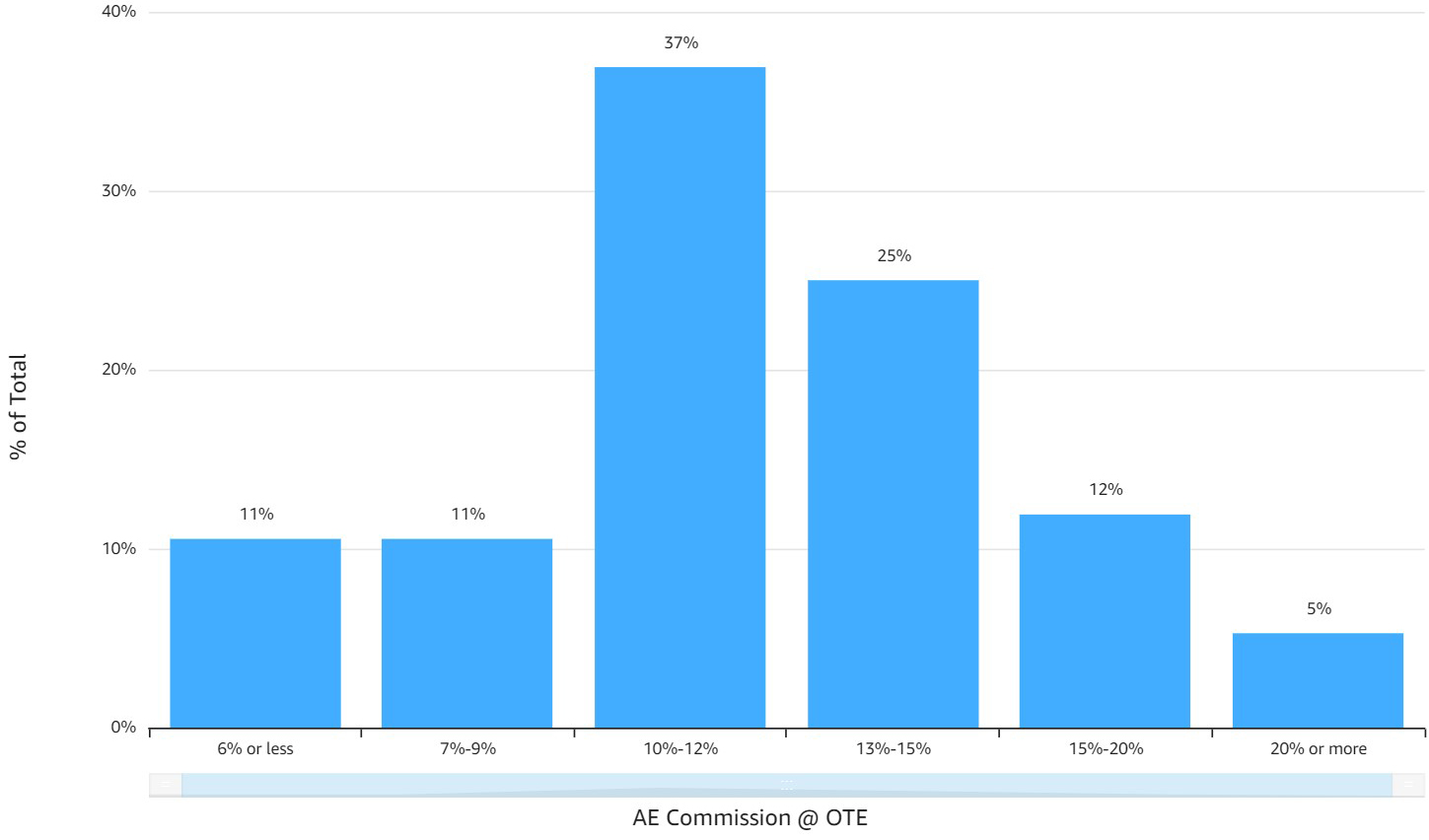A Look at AE Commissions
In software sales compensation, managers tend to focus on metrics like quota, on-target-earnings (OTE), and the Quota-to-OTE Ratio. For good reason – these metrics are fundamental drivers of your economics.
But you shouldn’t ignore commission rates, since they are where the action is for the AE. Once they’re on the job, the commission rate is the one metric that tells them how much more they’ll make when they close deals. So it’s critical to understand the market for commissions. Here’s what we find when looking at the data from BenchSights:
Distribution of AE Commission Rates at OTE

- Classic bell curve centered at 10%-12% (median=11.5%)
- Over 60% set commissions between 10% and 5%
How do decisions on commissions impact performance? The answer is they do, but it’s a bit nuanced. Specifically, we found that if you’re on the left side of the bell curve, your performance tends to deteriorate. For example, we found that AEs with commissions below 8% tended to deliver much poorer performance – a 20% point difference of achieved quota capacity. Interestingly, beyond the 8% threshold, we didn’t find significant correlation. In other words, statistically, companies weren’t better off playing 15% vs. 10%.
Of course, your situation may be different. Selling a lower margin product may dictate a need for lower commissions. The generalized lesson still holds though. Avoid being on the left side of the commission rate bell curve.
Want more data like this? Join BenchSights. We’re building a “Data Co-op” for the software sales industry. Your data is always kept anonymous and confidential. Membership is free and all active members providing data gain access to our free BenchSigh– Quota ts reporting. Go to https://benchsights.com to get started.
* The base commission rate is the variable compensation paid to an AE who delivers quota, divided by the quota (ARR basis)). Quota Capacity (QC) is total ARR bookings achieved by the AE team divided by the product of (1) avg. quota per AE and (2) avg. number of AEs.
